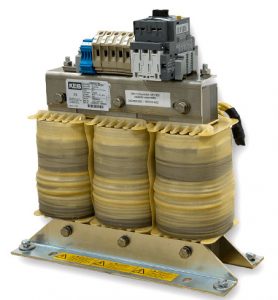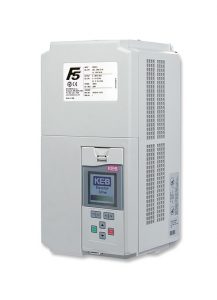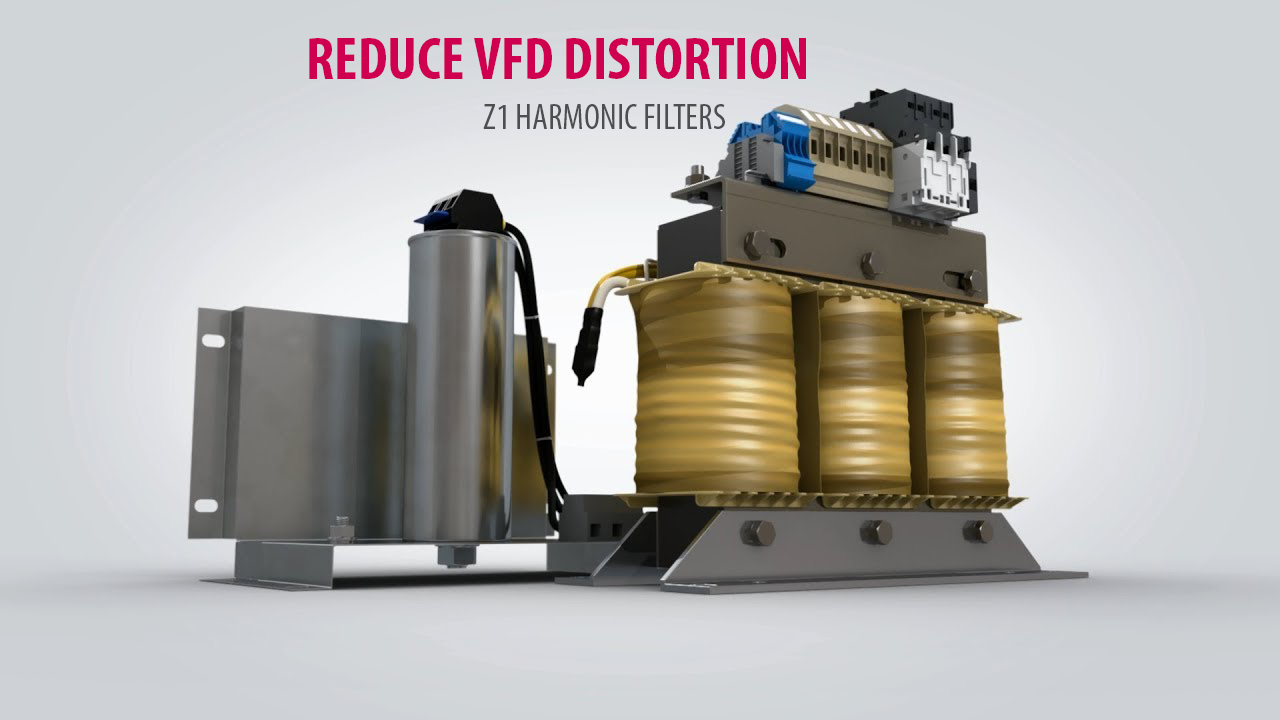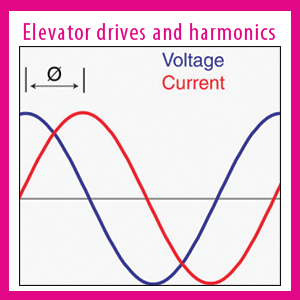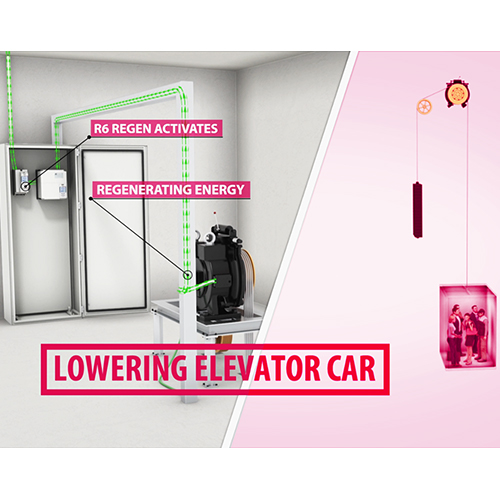KEB engineers answer a few frequently asked questions about elevator drive harmonics and why it’s an important factor to consider in your elevator drive application.
1. How does a VFD create harmonic distortion?
The input rectifier stage of a 6-pulse VFD draws non-linear (non-sinusoidal) current from the power supply. A VFD’s total rms current draw contains current components at both the fundamental frequency (60Hz) and at frequencies at higher harmonic orders (300Hz, 420Hz, etc.).
An electrical load (i.e. VFD or a computer power supply) that draws a significant amount of current harmonics relative to the size of the power supply can create voltage distortion on the supply. Watch the video below for more about harmonic distortion and how KEB filters smooth out the power supply.
2. Why should I care about harmonic distortion?
Significant voltage distortion can create operational problems for other electrical equipment connected to the utility. Certain types of electrical equipment are more susceptible to voltage distortion issues – especially sensitive computer equipment found in laboratories, hospitals, airports, and universities.
Besides affecting the operation of other electrical equipment, harmonics also create larger RMS currents which increase conductor heating, stress the system’s electrical and mechanical components, and increase the likelihood of system resonances.
3. What is IEEE 519-2014?
The IEEE 519 standard defines acceptable power quality levels for both the utility and consumers and outlines the procedures needed to test power quality. The standard states that a utility power company has a responsibility to provide its customers with a quality power supply with low voltage distortion. A utility customer also has a responsibility to not draw significant harmonic currents which introduce voltage distortion on the utility and problems for other clients.
Specifically, chapter 10 describes “the current distortion limits that apply to individual consumers of electrical energy”.
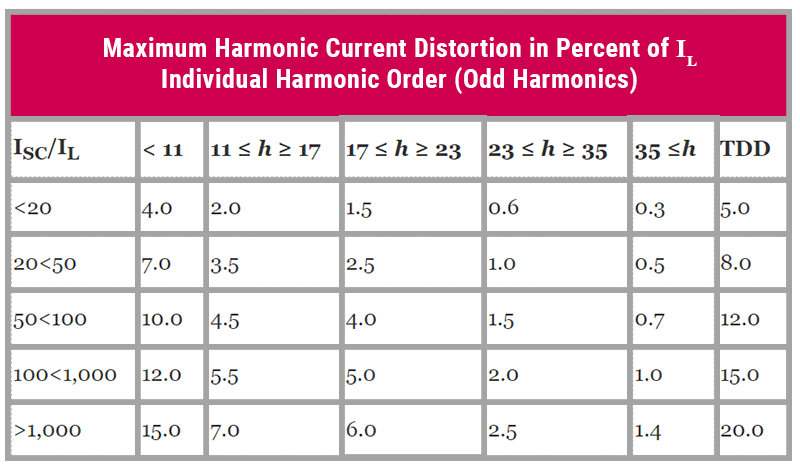
4. THD vs. TDD
As defined by the IEEE 519 standard, the total harmonic current distortion (THDI) is the ratio between the amount of harmonic current and the current at the fundamental frequency. Because the exact loading and utilization of an elevator application are not known up-front, the THDI is a relevant metric to component manufacturers. Using some basic assumptions, a manufacturer can guarantee a given THDI performance level at a rated current level.
The THDI is an instantaneous measurement and will not remain the same across all loading levels. Specifically, when a VFD is operating at reduced load the THDI value will increase. However, it is important to remember that while the THDI value might increase as the loading level decreases, the harmonic level is expressed as a percentage of fundamental current which is at a reduced level – therefore, the actual amount of harmonic current at partial load is less than the amount at full load.
According to the IEEE 519 standard, the total demand distortion (TDD) is the ratio between the amount of harmonic current and the maximum demand load current as measured over a 15 or 30 minute period. However, a 15 or 30 minute sampling is likely not relevant in an elevator application because of the sporadic nature of loading levels and duty.
A measurement taken at off-peak times or when the motor is not fully loaded will not provide an accurate picture of the worst-case distortion values. A more relevant demand distortion test would be to run the elevator at rated load and rated speed. This provides a meaningful measurement of the worst-case scenario – when the elevator would contribute the most voltage distortion to the utility.
5. What is ISC/IL ?
ISC refers to the available short circuit current of the supply. IL refers to the rated current of the load. So, the ISC/IL is a relative comparison between the size of the utility power supply and the size of the connected load. Large loads have a greater effect on the voltage distortion of a power supply than small loads.
Therefore, larger loads have stricter requirements to the amount of acceptable harmonic distortion. The IEEE 519 standard defines acceptable TDD levels at given ISC/IL ratios.
It is difficult for a VFD or component manufacturer to guarantee a level of harmonic performance without knowing the ISC/IL ratio, pre-existing voltage distortion of the supply, and actual loading levels. Therefore, harmonic mitigation performance is often specified using assumptions of the relative size of the load with restrictions placed on the amount of baseline voltage distortion.
KEB harmonic filters are designed to provide ≤ 8% THDI at rated load, assuming ISC/IL ≥ 20 and the amount of baseline voltage harmonic distortion (THVD) is < 2%.
Do you have any questions on harmonics or KEB harmonic filters? Contact a KEB elevator application engineer to discuss.
Let's Work Together
Connect with us today to learn more about our industrial automation solutions—and how to commission them for your application.
